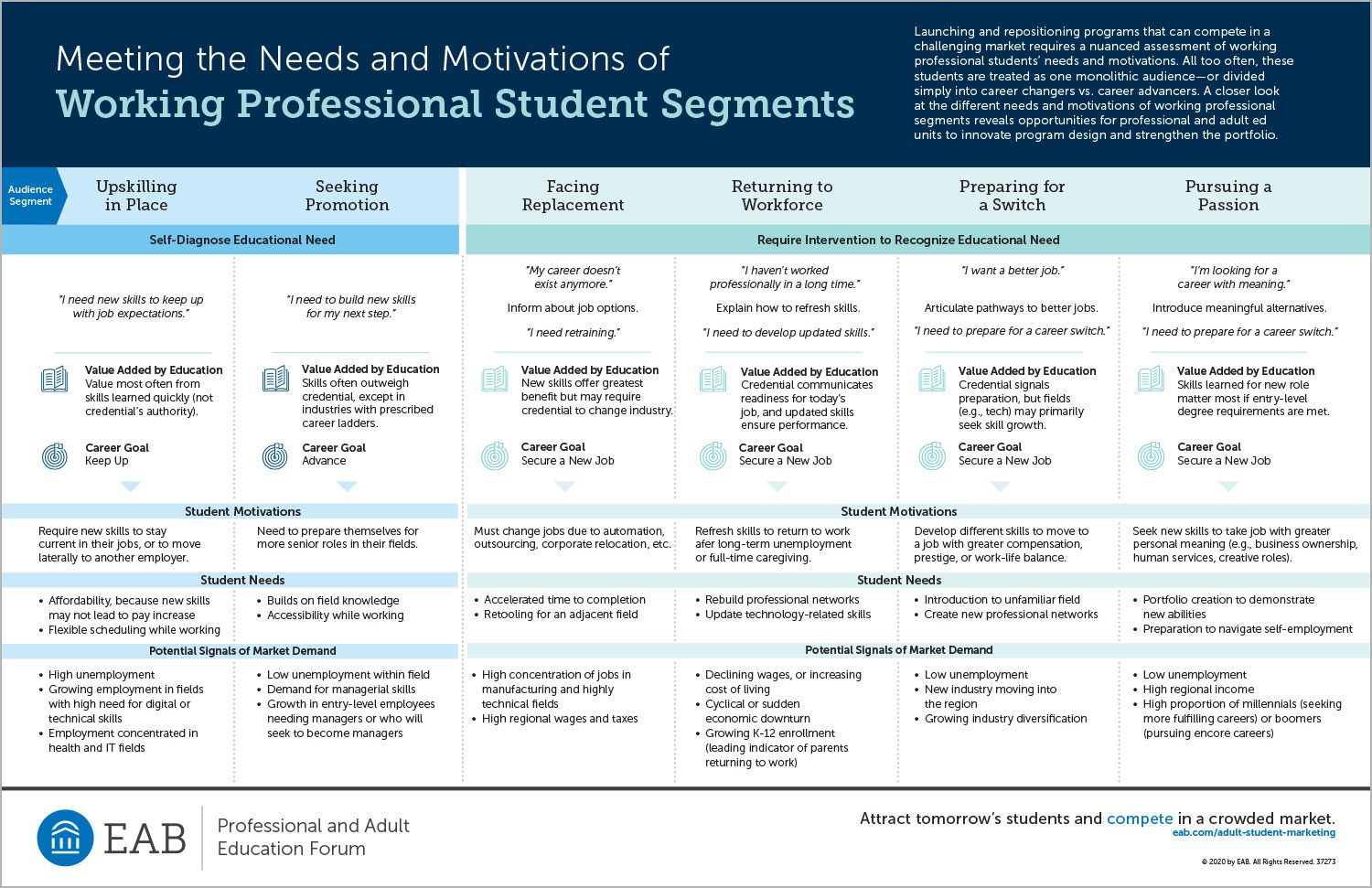Infographic
Understanding the needs and motivations of working professional student segments
Launching and repositioning programs that can compete in a challenging market requires a nuanced assessment of working professional students’ needs and motivations. All too often, these students are treated as one monolithic audience—or divided simply into career changers versus career advancers.
A closer look at the different needs and motivations of working professional segments reveals opportunities for professional and adult education units to innovate program design and strengthen the portfolio.
More Resources

Research Report
Launching an Online Education Programme? 5 Questions and Recommendations from EAB Experts
This report outlines decision points and lessons learned to consider when launching an online education programme at your…
Strategic Advisory Services

Resource Center
The Industry Future Series: Exploring the Next Era of Professional Programming
Discover resources that will help colleges and universities understand the most impactful ways to adjust academic programming to…
Professional and Adult Education Advisory Services

Research Report
MOOCs as a recruitment tool: the University of York’s approach to ‘try-before-you-buy’ courses
Discover how the University of York’s used MOOCs as a recruitment tool with their ‘try-before-you-buy’ approach to courses.
Professional and Academic Services Forum
